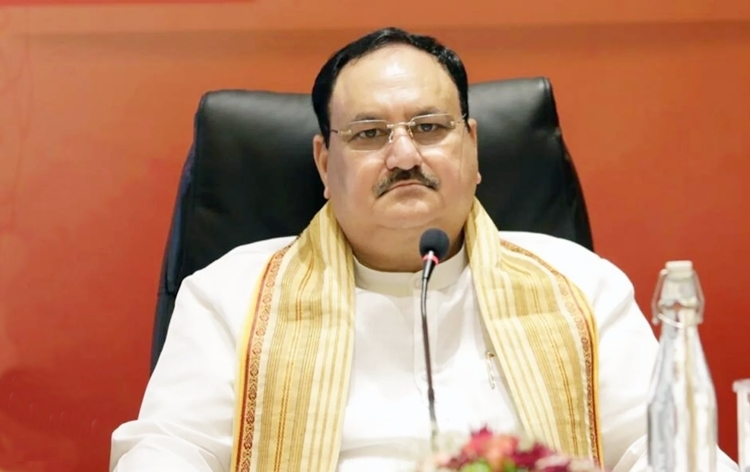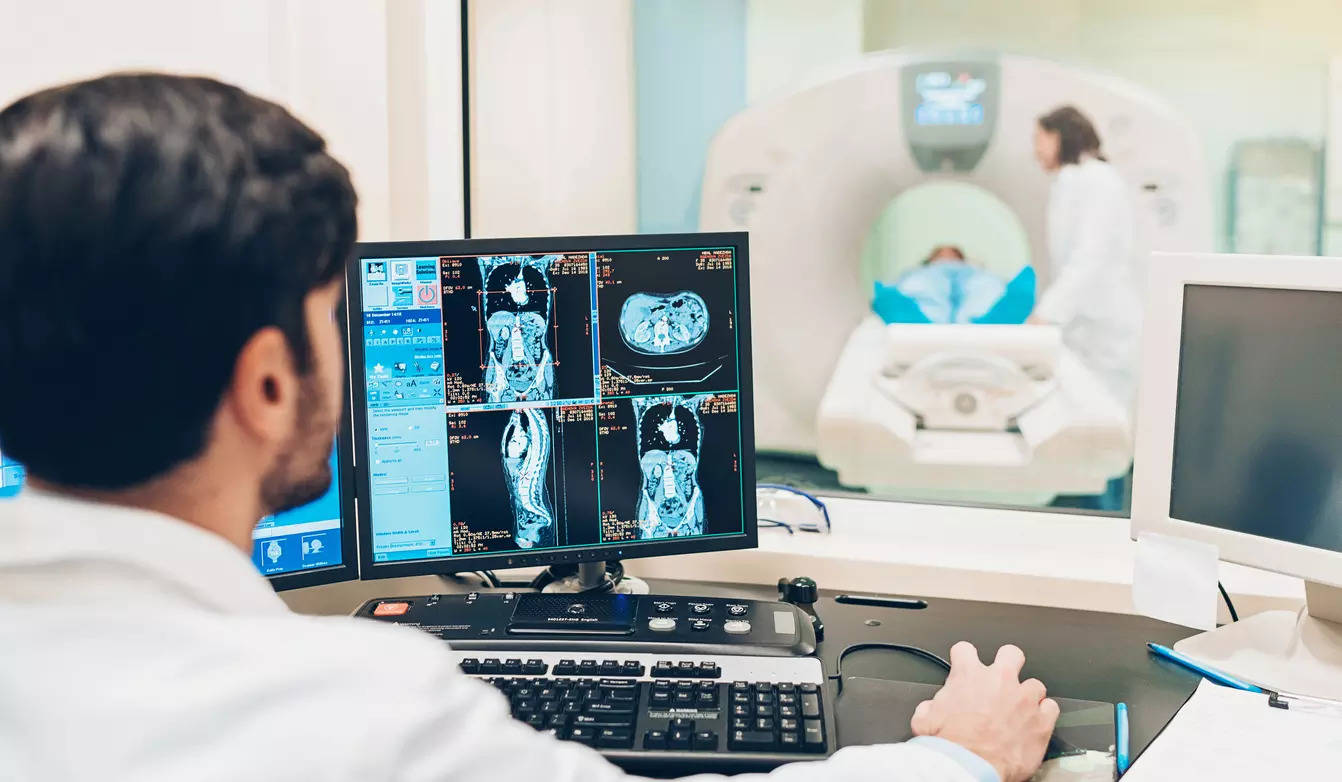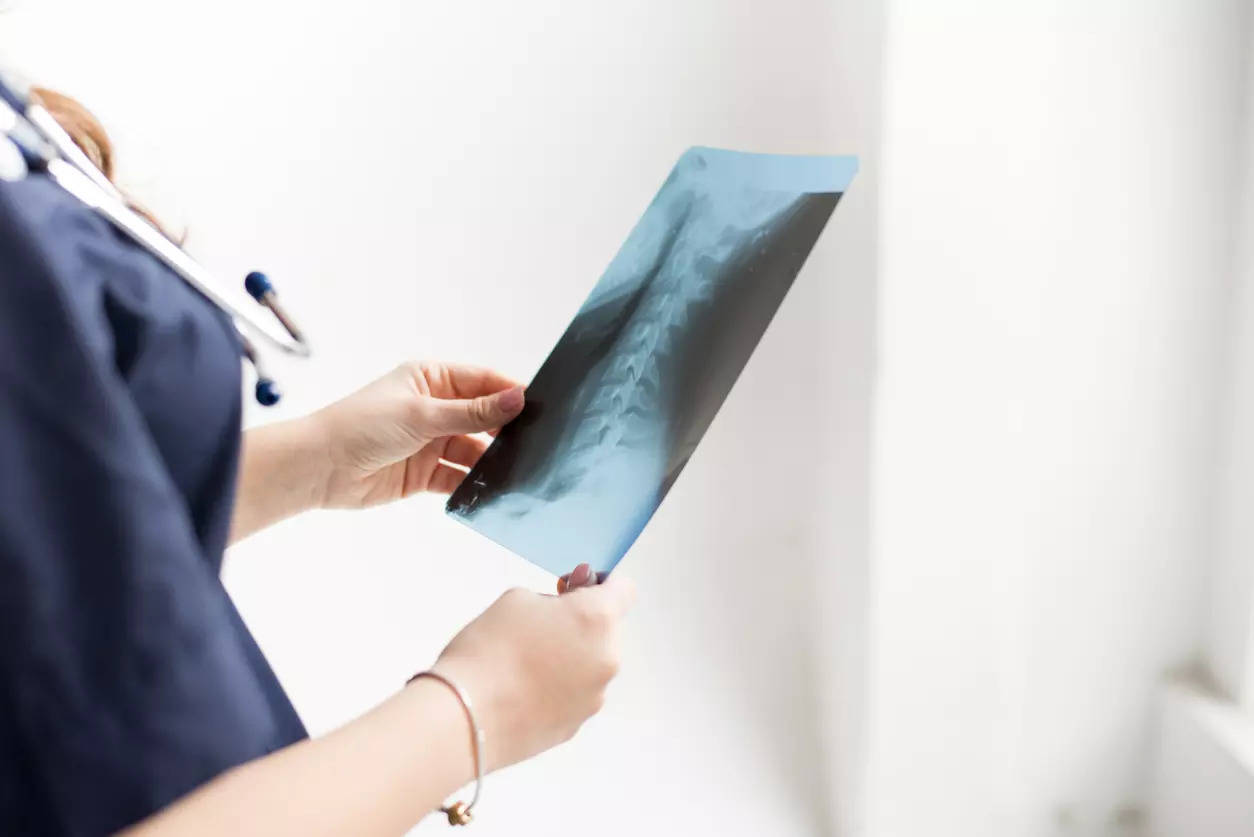On a fateful morning in June 2023, Khairunnisa Jalaluddin (name changed), a 55-year-old homemaker from Gudalur in Tamil Nadu, woke up with a pounding headache. As she tried to sit up, a wave of dizziness engulfed her. “To our horror, we discovered that her one side was paralysed, and her speech was slurred,”recalls Shajir, Khairunnisa’s son, who rushed her to the nearest primary care centre. “At the hospital, they asked us to get a CT scan, which was not available locally. So we crossed the border and travelled approximately 50km from our village to a hospital in Sulthan Bathery in Wayanad in Kerala.”There, Khairunnisa was diagnosed with stroke and promptly administered thrombolytic therapy, wherein clot-busting medications were injected directly into the clot to dissolve it.
In current scientific understanding, an intravenous medicine that can break up a clot has to be given within 4.5 hours of the symptoms showing up. Typically, an expensive and strong clot-busting drug like recombinant-tissue plasminogen activator (r-tPA) is used to dissolve the clot and open the artery to restore flow to the brain. In some cases, particularly when the clot is too big, this drug is not effective. And if the treatment is given after six hours of the onset of stroke, then catheters and clot retrieval devices (stent retriever) are inserted through a 1mm hole in the artery of the groin (femoral artery) to reach and open the blocked segment of the brain artery.
In Khairunnisa’s case, a large, proximal cerebral artery was blocked, and the Wayanad hospital referred her to Baby Memorial Hospital (BHM), a tertiary care centre in Kozhikode for an advanced procedure called mechanical thrombectomy. By then, almost 14 hours had passed since the onset of Khairunnisa’s symptoms. Sulthan Bathery to Kozhikode is almost 90km, including a 14km-long Thamarassery Ghat, which has nine hairpin bends and is notorious for traffic jams. An ambulance carrying Khairunnisa started from Wayanad around 8pm and reached BHM close to midnight. A team, led by renowned neurointerventional surgeon Dr Shakir Husain, had been waiting.
A pioneer in the neurointerventional arena in India, Husain removed the blood clot inside the artery in a 90-minute procedure, utilising endovascular devices and an advanced image guidance system. “This was a one-of-a-kind case,”recalls Husain. “The patient had a stroke in the morning. Normally, the best candidates for a mechanical thrombectomy procedure are those who get it done within three to four hours of the onset of stroke symptoms. But this was done almost 18 hours after the stroke event. We could do it because she had good collaterals and we could open up the artery completely.”
Khairunnisa suffered a stroke on the left side of the brain, leading to right side paralysis and a loss of speech. Her recovery process started immediately after the procedure, says Husain. Nearly 10 months post the stroke, Khairunnisa’s paralysis has been completely reversed, and she has regained her speech.
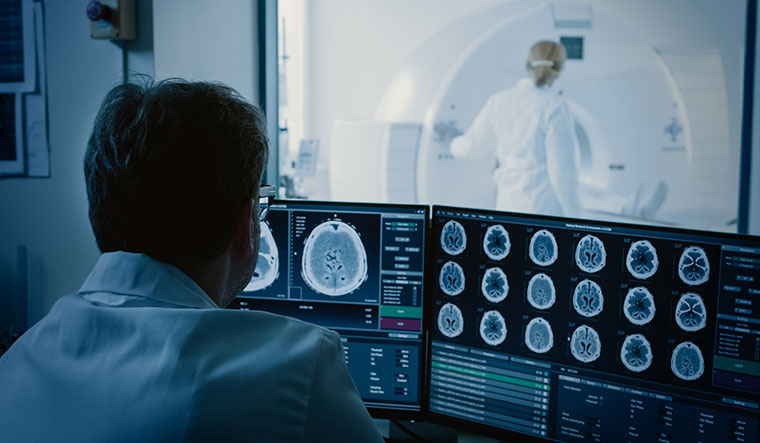
Key indicator: The workhorse for stroke treatment initiation is a plain CT scan | shutterstock
Over the past two decades, Husain has successfully treated numerous stroke patients like Khairunnisa. However, he points out that while a limited number are saved, thousands of Indians, particularly those from rural areas, succumb daily owing to the inability to reach hospitals with adequate facilities or trained doctors in time. He cites the case of Khairunnisa, who had to travel over 140km to access treatment.
Strokes are broadly classified into two types: ischemic and haemorrhagic. Ischemic strokes occur due to a blockage of a blood vessel, resulting in inadequate blood flow to a part of the brain, and accounts for about 80 per cent of all strokes. Haemorrhagic strokes are caused by the rupture of a blood vessel in the brain, leading to bleeding into the brain tissue. Ischemic stroke is primarily treated with clot-busting drugs and clot removal procedures, while haemorrhagic stroke requires treatments to stop the bleeding and control intracranial pressure.
In cases like Khairunnisa’s, who had an ischemic stroke, timely restoration of cerebral blood flow using reperfusion therapy is the most effective treatment for salvaging brain tissue that is not already dead. But reperfusion therapy needs to be done within the ‘golden hours’as its benefits diminish over time.
“However, the biggest impediment we face is the lack of public awareness,”says Husain, who insists that the public should be able to detect a person showing symptoms of stroke and act immediately. “Sometimes, you may have a government-run or private hospital with good infrastructure, but community participation is lacking. Community participation entails that the community should assist a stroke case in reaching the appropriate hospital in time. It is a race against time. Another critical factor is the internal condition of the brain’s circulation, known as collateral circulation. When there is robust protective collateral circulation, we can still achieve positive outcomes even if the patient arrives after 10 hours.”But there have been cases where optimal outcomes could not be achieved despite the patient reaching the hospital within 30 minutes because the collateral circulation, which provides alternative routes for blood flow, was not robust enough, he adds.
Globally, stroke ranks as the second leading cause of death. The global burden of stroke is more pronounced in the developing world, which accounts for 86 per cent of deaths. However, due to the lack of reliable reporting mechanisms and other factors such as small sample sizes in existing epidemiological studies, accurately estimating the stroke burden in India and other developing countries poses a significant challenge.
According to a study published in the Indian Journal of Medical Research in 2017, the cumulative incidence of stroke ranged from 105 to 152 per one lakh people per year, with the crude prevalence ranging from 44.29 to 559 per one lakh people across different regions of the country in the past decade.
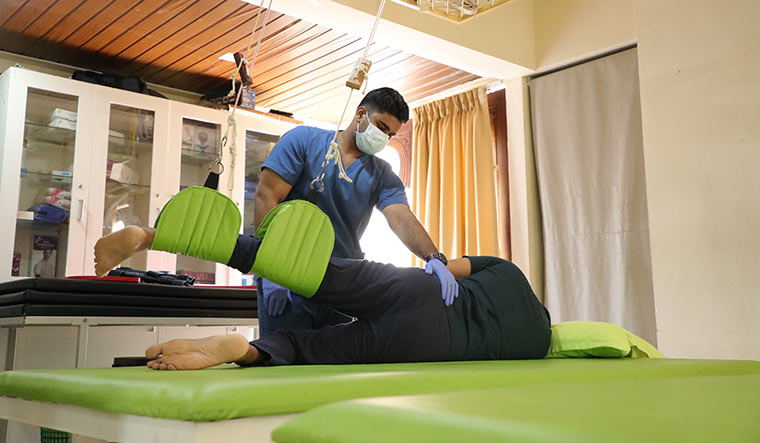
Recovery in progress: A patient undergoing rehabilitation at RAHA CFAAR Ayurveda Hospital in Kochi | Vishnudas K.S.
“As we speak, a stroke occurs somewhere in the country every 20 seconds, with one stroke-related death occurring every two minutes,”says Dr M.V. Padma Srivastava, former head of neurology and chief of the Neurosciences Centre at the All India Institute of Medical Sciences, New Delhi. “These statistics are comparable to those of road traffic accidents or heart attacks.”Moreover, with just over 3,500 neurosurgeons and 1,300 neurologists in India, there exists a significant disproportionality in access to stroke care across different regions.
Pioneers like Husain are actively working to address this gap by striving to increase the number of neuro-interventionists through initiatives such as the Stroke & Neurointervention Foundation. However, Srivastava emphasises that bridging the substantial “health divide”exceeds the capacity of any single individual or group of doctors.
Srivastava cites a pivotal study published in The Lancet in 2017, which identified a significant shift in disease patterns. Between 1990 and 2016, non-communicable diseases such as cancer, heart attacks and strokes have emerged as the leading causes of death, surpassing communicable diseases like malaria and tuberculosis. She further observes that while Covid-19 momentarily diverted attention, non-communicable diseases have regained prominence post pandemic. Additionally, Srivastava highlights a worrying trend: a notable increase in the number of young stroke patients in India.
“The percentage of strokes among young individuals in western countries is 3.3 per cent. However, in India, published data estimates a percentage between 20 and 27. This indicates that one-fourth of all strokes occur in young people, which is a substantial figure,”she says.
Experts underscore the economic burden posed by an increasing number of young stroke patients owing to their longer life expectancy post stroke, higher lifetime costs per case and the significant impact on their quality of life and productivity. This necessitates sustained health care and support services. Experts like Husain stress the importance of policymakers analysing and identifying different cost factors associated with stroke and implementing health policies aimed at reducing the disease burden on India.
“An efficient stroke care system is essential for stroke management,”says Husain. “India must be prepared to address this catastrophic illness, the incidence of which is predicted to increase significantly in the next 20-30 years. Since stroke is also the leading cause of permanent neurological disability in adults, the reversal of stroke symptoms through thrombolysis and the delivery of organised stroke care becomes paramount nationwide.”
HUB-SPOKE AND SCOPE
According to Srivastava, the “workhorse for stroke treatment initiation”is a plain CT scan. “While significant advances in imaging have occurred, often implemented in high-end hospitals accessible to a privileged segment of society, it is essential to recognise that strokes also occur in underserved areas where access to CT scans may be scarce or non-existent,”explains the Padma Shri awardee, who spearheaded initiatives like the Smart India app, CARE-DAT and the IMPETUS programme during her tenure at AIIMS. These initiatives aimed to bridge the gap and make low-cost stroke care accessible in distant towns and villages of India.
The intention behind these initiatives was to broaden the scope of stroke care by training physicians in district hospitals to diagnose and manage acute stroke using a low-cost model. “If there is at least a district hospital equipped with CT scan facilities, it can serve as a base in the stroke care system,”says Srivastava. “A plain CT scan can detect any bleeding in the brain, along with ensuring optimal blood pressure and sugar levels. We have developed a user-friendly criterion that can be utilised in district hospitals to provide tele-stroke care via platforms like WhatsApp.”
Tele-stroke services are widespread globally, but they often come with high costs. Husain highlights successful “hub-and-spoke”models existing in countries like Switzerland. “In Zurich, patients are initially directed to hospitals in their local areas. Only cases requiring advanced treatment are transferred to the University Hospital. This system conserves and effectively utilises resources,”he explains.
Srivastava underscores that the effectiveness of such peripheral centres in managing primary care during stroke cases determines the success of such a model. In India, this necessitates a strong partnership between public and private hospitals.
Himachal Pradesh served as the launch pad for such a model in India in 2014, but the southern states have established it better, according to Srivastava. However, issues persist in many other regions, particularly related to public awareness, which undermines the effectiveness of the system. “The public needs to know how to recognise a stroke,”she insists. “Without patients seeking help, treatment cannot be administered. Therefore, part of the outreach programme aims to increase awareness of stroke recognition.”
Another critical juncture is when a patient arrives at the nearest district-level hospital. The AIIMS team developed a set of protocols or checklists for stroke care at these satellite hospitals. These checklists include essential equipment such as thrombolytic drugs, blood pressure monitoring devices and point-of-care systems to check blood sugar. “Additionally, trained personnel are required. Hence, we introduced the Smart India app, which helps physicians understand these protocols efficiently. This process involves not just neurologists but also physicians as the first point of contact,”explains Srivastava. This mechanism is currently being implemented nationwide to involve physicians across the country.
The glamorous aspect of stroke management often revolves around procedures like clot removal, clot dissolution and surgery. However, the essential steps that can be implemented in all hospitals involve patient positioning, timing of blood pressure measurements and addressing the requirements for sodium, potassium, fluids, electrolytes and nutrition, while also focusing on infection prevention and complication avoidance. “Research has shown that simply implementing stroke unit management can increase survival rates by 40 per cent,”says Srivastava. “This approach requires dedicated personnel who are knowledgeable about potential complications, can anticipate and prevent them, and effectively manage them when they arise.”
The medical field has already witnessed robotically performed neurointerventional procedures, encompassing diagnostic cerebral angiography, carotid artery intervention and the treatment of intracranial aneurysms. Experts are optimistic about the future potential of teleoperated robots, which could revolutionise the treatment of neurovascular diseases by providing remote precision and dexterity. These advancements have the potential to eliminate physiological tremors and operator fatigue, ultimately improving patient outcomes. However, experts emphasise that immediate action is imperative to address the current needs of the population, as waiting for future innovations is not an option.
LOOK FOR EARLY SIGNS
A stroke can strike suddenly, seemingly out of nowhere. However, there are certain types of ischemic events known as transient ischemic attacks (TIAs), also known as mild strokes, that act as warnings. During TIAs, the blockage of blood flow to the brain is temporary, resulting in short-lived symptoms that do not cause permanent brain damage. “During a TIA, you may experience temporary vision problems or numbness on one side of your body, which then resolve on their own. Because these symptoms come and go, they can be easily overlooked,”explains Srivastava. “However, if you have risk factors such as high blood pressure, high blood sugar, or a family history of strokes or heart attacks, it is crucial to take these symptoms seriously and seek medical attention. Don’t wait for a major event to occur.”
Sedentary lifestyles, unhealthy habits such as smoking and excessive drinking, and lifestyle diseases like hypertension and diabetes are often considered the primary culprits behind many stroke cases. Genetic factors and advanced age can also increase the risk of stroke. Additionally, there are unusual cases where vigorous neck movements, overextension or incorrect positioning of the neck can lead to injury to blood vessels and subsequent stroke.
Terms such as ‘barber chair stroke’or ‘beauty parlour stroke’have been coined to describe certain unique cases where individuals experience strokes after undergoing activities like hair washing or receiving “customary neck clicks”from their barber. In October 2022, one such case gained attention in India after neurologist Dr Sudhir Kumar from Hyderabad shared a case in which a woman developed stroke symptoms, starting with dizziness, nausea and vomiting while shampooing her hair at a beauty parlour.
There is another concerning scenario related to neck movements that could lead to a stroke. “Indians have a tendency to use mobile phones even while driving two-wheelers, often tilting the neck to one side and supporting the phone with one shoulder,”says Husain. “I have witnessed cases where a sudden movement of the neck after a prolonged phone call resulted in a stroke.”
Srivastava outlines various factors contributing to the increase in stroke cases, including pollutants and climate change. She also cites sleep disturbances and irregular sleep patterns, particularly prevalent among the younger population due to excessive use of digital devices late at night, as a frequently underestimated yet significant factor leading to strokes. Individuals with unconventional job patterns, especially those that disrupt the sleep cycle, also face a heightened risk of stroke.
TIME FOR INTEGRATION
A patient’s rehabilitation journey following a stroke must commence promptly to maximise recovery and regain lost functions. Typically, this process involves a combination of therapies, such as physical, occupational and speech therapies, tailored to meet the individual’s unique needs and goals. However, there is a growing consensus on integrating treatment modalities from traditional medical systems like ayurveda into the rehabilitation process to offer holistic healing.
Individuals who have had a stroke are at a heightened risk of another. “Not all strokes are the same,”says Srivastava. “Some may involve major blood vessels, such as the internal carotid artery, while others may affect smaller branches within the brain, known as small vessels. Strokes can be caused by various factors, including blood clots in the heart (cardioembolic), infections or vasculitis (inflammation of blood vessels). Treatment and prevention strategies are customised to the specific cause of the stroke, in addition to employing general management techniques.”
Dr M.R. Vasudevan Namboothiri, former director of Ayurveda Medical Education in Kerala, says that ayurvedic interventions can effectively disrupt the pathogenesis―the process by which a cause develops into a disease or disorder―and significantly reduce the risk of stroke recurrence.
Experts like Srivastava also advocate for integrating interventional approaches from traditional medical systems with physiotherapy to enhance patient recovery. “We need to adopt an inclusive approach,”says Srivastava, who, along with Rama Jayasundar, who heads the NMR (nuclear magnetic resonance) and MRI department at AIIMS, has conducted studies on the pathobiology of classical ayurvedic interventions in post-stroke recovery using magnetic resonance and other techniques based on structural, functional and chemical biomarkers.
Dr Anwar A.M., founder of RAHA CFAAR Ayurveda Hospital in Kochi, is a staunch advocate and practitioner of integrating different systems and specialties to enhance the stroke rehabilitation process. At RAHA, a diverse team of professionals, including ayurvedic doctors, physiotherapists, acupuncturists, neurologists, physiatrists, psychologists, speech therapists, respiratory therapists, yoga instructors, naturopathy specialists, masseurs and other support personnel, ensure a comprehensive treatment approach.
“When a person is admitted here, doctors from various specialties assess them,”says Anwar. “We review their medical history and ensure continuity of necessary medications. For instance, if someone requires insulin, we ensure they receive it and monitor their blood values. We maintain a chart for this purpose. Every morning, doctors conduct rounds, after which the patient undergoes various therapeutic modalities.”
Ajaz (name changed), 46, a former artist who previously managed a famous Kochi-based comedy troupe, is undergoing rehabilitation at RAHA. To better support his family, he had become an Uber driver. “In the last few years, he had been trying to migrate to the US and had been working tirelessly to secure funds and create a safety net for us,”says his wife Shaheen (name changed). “His sleep was irregular due to his nighttime driving. Then, last year, on the evening of April 18, while taking our younger son for football training, he suffered a stroke.”
Ajaz had an ischemic stroke on the left side of the brain, resulting in paralysis on his right side. “He initially received thrombolysis, but unfortunately, he later developed a condition called haemorrhagic transformation of ischemic stroke,”explains Anwar. Following thrombolysis, a decompression craniotomy―a neurosurgical procedure involving the removal of a part of the skull―was performed to relieve pressure on his brain. Subsequently, due to breathing difficulties, a tracheostomy was performed. To address feeding issues, a nasogastric tube, followed by a gastrostomy, was inserted.
The stroke resulted in speech impairment and short-term memory issues in Ajaz. Psychotherapy was initiated, and by July, he showed significant recovery in terms of movement. However, he continues to have speech and memory issues, with stiffness in his right hand and right leg. During THE WEEK’s visit to RAHA, Ajaz underwent a treatment protocol comprising physio-based gait training, followed by a nerve-stimulating and pain-relieving acupuncture session, and then a medicated-oil ayurvedic procedure aimed at reducing stress and nervous tension. Additionally, he participated in a robot-assisted arm exercise designed to provide biofeedback, a mind-body technique wherein the patient receives information about their body through electrical pads.
The development of such robotic solutions and making them affordable for the Indian population is the major mission for Centre for Advanced Research and Excellence in Disability & Assistive Technology (CARE-DAT), which is a Centre of Excellence created under the aegis of the Indian Council of Medical Research. Srivastava spearheaded this initiative when it commenced as a collaboration between IIT Delhi and AIIMS. “While there have been significant advancements in assistive devices globally, many of these technologies are either unavailable or prohibitively expensive in India,”she says. “Therefore, we partnered with the biomedical engineering department of IIT Delhi to develop affordable robotic and assistive devices.”
Meanwhile, Husain underscores the significance of lowering the cost of stroke intervention in the country. He advocates for a substantial emphasis on research and development to decrease the cost of consumable materials―such as medical supplies, equipment and materials utilised during stroke intervention―that are currently priced high. “Without compromising on quality, if we can develop something that offers cost benefits to patients, it will be impactful in India,”he says, expressing hope that governments and the public will take crucial steps to support research efforts toward this goal.


